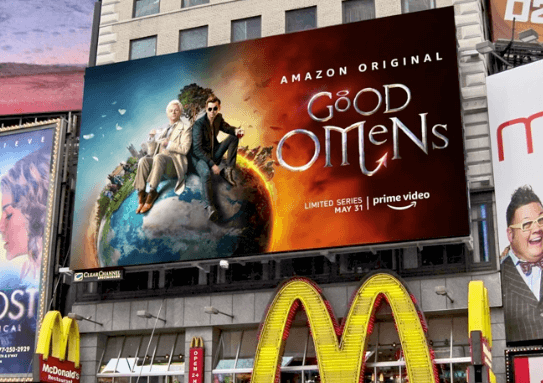
In the digital age, some of the biggest companies in the world are increasing spending in out-of home (OOH) advertising. In their 2019 annual report, the Out of Home Advertising Association of America (OAAA) named the 7 megabrands below as the biggest OOH advertisers – ranked in order of OOH spending. This article outlines why OOH is thriving amongst media platforms, and how it still changes the game for brands across all sectors.
Why OOH advertising prevails in the digital age
These days, virtually everyone owns a smart device and uses social media. However, this doesn’t necessarily mean that every brand should dump 100% of their marketing dollars into paid digital advertising.
The world’s top brands are increasingly recognizing the value OOH brings to their marketing mix. In addition to being bold and eye-catching, OOH is one of the only traditional channels that buck the law of diminishing returns, while remaining immune to being ad blocked, skipped, or delayed. While the click-through rate across all online advertisements is only 0.05% (5 clicks per 10,000 impressions), 100% of pedestrians, commuters, drivers, mall shoppers, and more are influenced by OOH ads they catch a glimpse of. According to a study conducted by investment banking company, PJ Solomon, OOH achieved the highest ad recall amongst all other marketing channels at 67%.
Let’s take a closer look at exactly how leading brands used OOH to amplify their omnichannel marketing efforts in 2019:
1. Amazon
In 2019, 4.2% of Amazon’s $17 billion USD total marketing spend was on OOH (approximately $721 million USD). Unsurprisingly, this figure is likely attributed to the e-commerce giant’s numerous impressive ad campaigns in some of the world’s most iconic OOH real estate – showcasing new Amazon Prime Video series, Amazon Prime free same-day delivery, Alexa, Kindle, AmazonFresh, and its plethora of other products and services.
A noteworthy campaign Amazon did in 2019 was an interactive digital billboard in Times Square which featured the highly-anticipated Amazon Prime Video original series, Good Omens. The billboard’s live camera feed caught the attention of every pedestrian walking by and promoted the series’ release date.

2. McDonald’s
Equally robust in its OOH marketing is the fast food giant, McD’s. With 9.6% ($720 million USD) of its marketing being spent on OOH, McDonald’s is no stranger to optimizing OOH strategies.
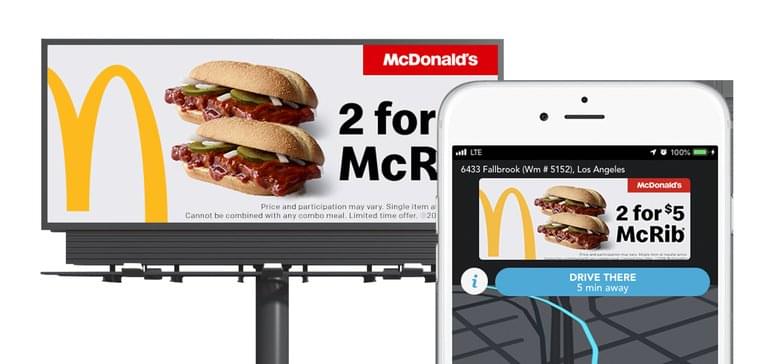
Not only has the fast food giant placed billboards strategically on roadsides, they’ve also taken advantage of mobile retargeting. Notably, McDonald’s launched 300 billboards equipped with geofencing technology in Southern California in early 2019. Using technology that maps out who the billboard campaign reached, McDonald’s was later able to promote a similar in-app ad for its McRibs burgers to users of Waze – a community-based GPS navigation app. Essentially, every Waze user who happened to pass by one of the McDonald’s billboards would later receive directions on the app to the nearest McD’s restaurant. The campaign was a success and saw over 8,400 Waze users accept GPS directions to their nearest McD’s.
3. Apple
Not too far behind in OOH spending is the tech giant, Apple. The company spent $690 million USD on OOH in 2019 (8.3% of total marketing spend).
In 2019, controversies surrounding user data security, privacy, and protection surfaced for multiple tech brands. With this, so did the need for transparent communication about these tricky topics. For Apple, this meant privacy-focused marketing.
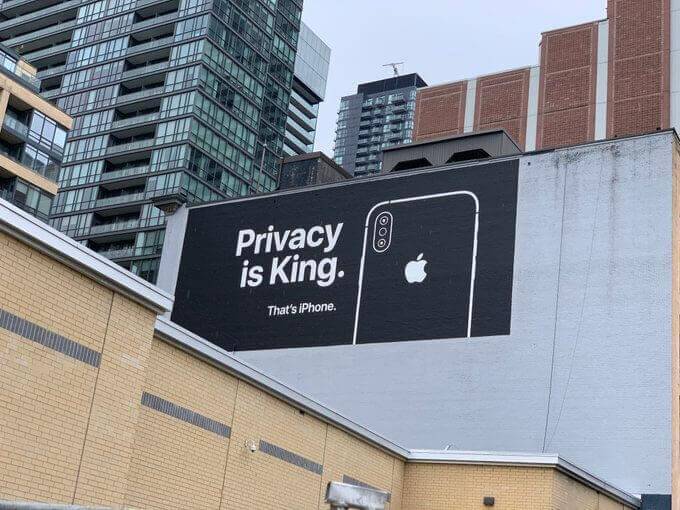
In Apple’s signature sleek and minimalist marketing style, the billboards contained short slogans conveying their commitment to user privacy which gave their customers a renewed sense of trust and confidence in the brand.
4. Geico
With the highest total marketing spend for any brand in 2019 at a whopping $18.4 billion USD, Geico spent $670 million USD of that total on OOH.
For the past decade, Geico has been known for its hilarious TV ads that feature their own OOH billboards. Receiving much success and attention over the years, Geico’s marketing strategy didn’t change much in 2019. However, 2019 marked Geico’s 75th anniversary and to celebrate the occasion, they released their signature OOH ads featuring their Geico Gecko mascot.
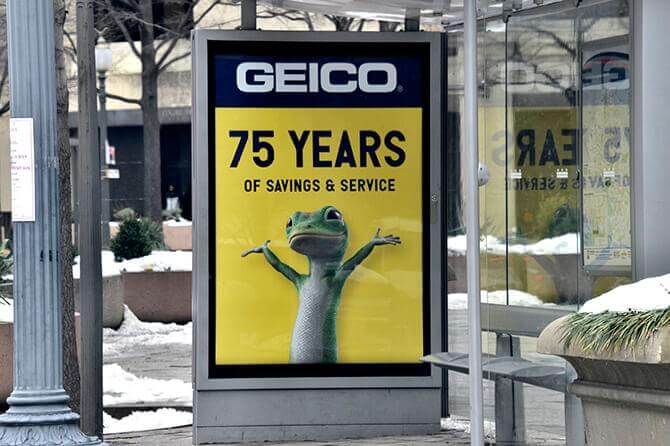
5. State Farm
Next up for highest OOH spending is Geico’s top competitor, State Farm. As the largest auto insurer in the U.S., State Farm spent $580 million USD on OOH in 2019 (6.9% of total marketing spend).
The fact that two of the largest American insurance companies rely on OOH advertising to reach their audience is no coincidence. According to studies done by Nielsen, 56% of customers inherently trust OOH as an advertising medium. Therefore, it makes perfect sense that companies, like Geico and State Farm, whose sales are dependent on building rapport with customers would flood the OOH market.
Like Geico, State Farm stuck to what it does best in OOH in 2019. Their bright red billboards and short taglines have caught and will continue to catch the attention of any driver or pedestrian passing by.
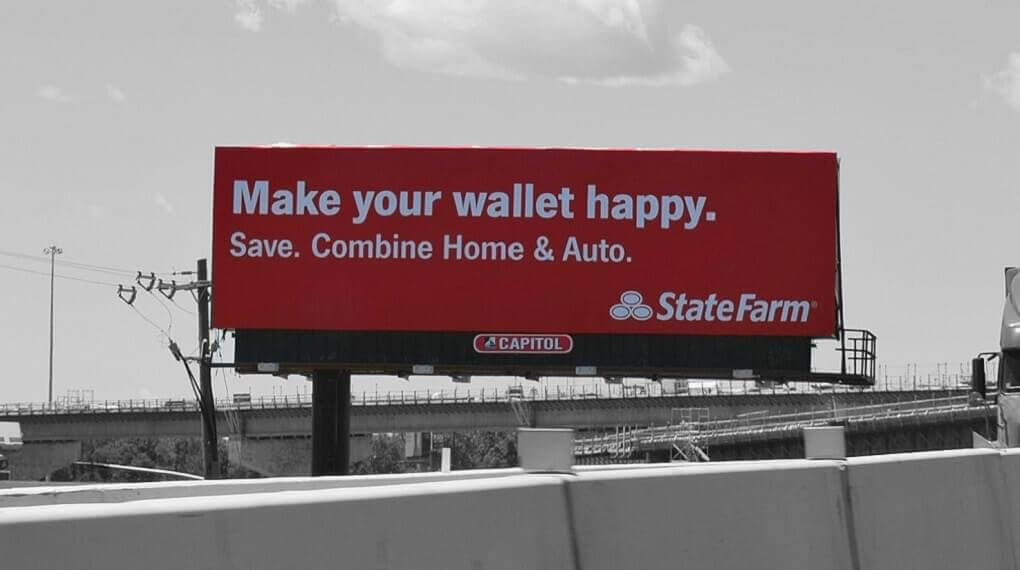
6. Google
Next up on the list is another familiar name, Google. In 2019, Google spent $460 million USD on OOH (7.3% of total marketing spend).
Google is no stranger when it comes to innovative, next-level OOH advertising. In the summer of 2019, Google launched a data-driven digital OOH campaign , “Make the Most of Summer,” across major cities in the UK.

Powered by Google Search trend data, the billboards displayed the web engine’s most popular summer search terms, such as, “Parks near me,” or, “Best ice cream in Glasgow.” Onlookers got the impression that Google was always there to help with finding summer fun.
7. American Express
Last, but certainly not least, is American Express. In 2019, the brand spent $340 million USD on OOH advertising (11.6% of total marketing spend).
In recent years, Amex has proven that they are, indeed, one of the elite brands when it comes to marketing experiences, events, and pop culture– be it with the NBA, A-list artists like Justin Timberlake, or Anschutz Entertainment Group.
For the past five years, American Express has maintained a strong OOH presence at the popular spring music festival, Coachella – reaching both the eyes and cameras of social media celebrities and music fans.
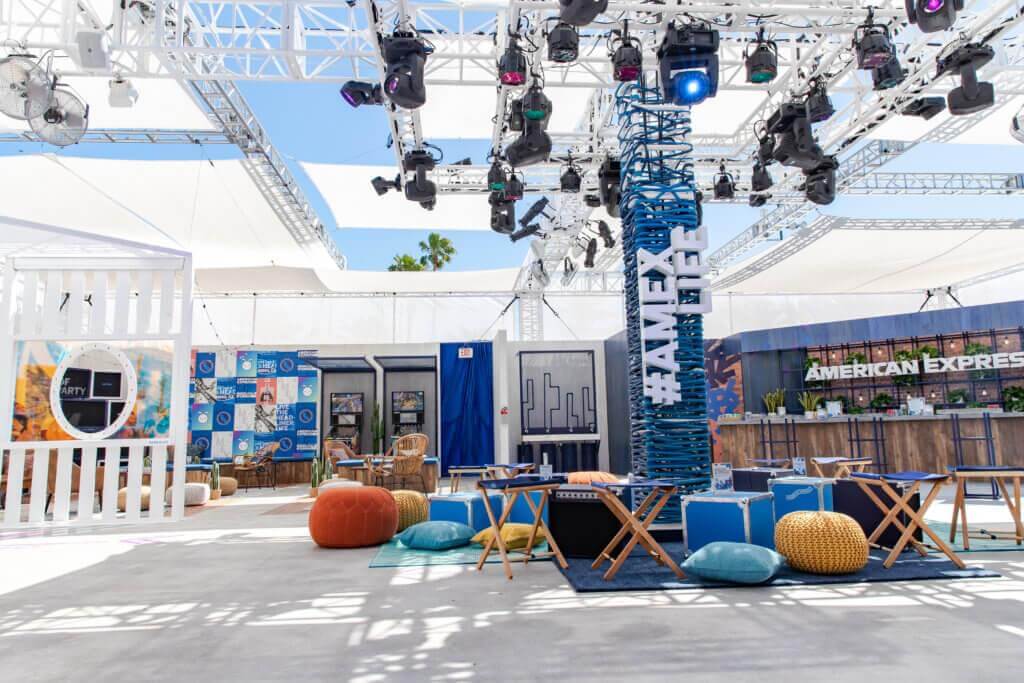
So, what’s the big deal with OOH?
If you’ve come across or heard the buzz around any one (or several) of the above OOH campaigns, then you’ve just helped to prove the point that OOH still works! Although most companies have nowhere near the large marketing budgets of industry megabrands, they can and should implement similar OOH approaches to optimize their marketing efforts.


